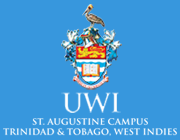BMET 1004 Introductory Human Anatomy and Physiology I
Course Description
It is essential that biotechnology personnel, in any form of the use of the body, should be more than merely acquainted with the human body and the relationship of its parts to the total working of the healthy person. Scientific background will underscore student opportunities to think critically, from the perspective of the human organism functioning independently, the interface between the individual and his/her immediate environment, including interactive relationships with technology, and global environment. This course integrates several disciplines including the basic gross anatomy and histology of all the system, as well as physiology of the human body. Contemporaneous issues of homeostasis, ergonomics, adaptation and health will be discussed in the context of today's emerging environmental and inter-organism impacts in the quality of life.
This course comprises: General Introduction of Gross anatomy, concepts and principles of cell biology; histology; the integumentary, skeletal, muscular, and nervous systems; special senses; and the endocrine system. This course will be assessed through in-course assignments, in-course laboratory exercises (PHYS 3163) and a final examination.
Content
Human structure and function: homeostasis and negative feedback, positive feedback and rapid change. Review of general basic chemistry: atoms, ions and molecules; water and mixtures, and energy and chemical reactions. Review of general basic chemistry: organic compounds Cell form and function: the cell surface and membrane transport; integumentary system. The genetic code and protein synthesis; Nervous tissue: overview of the nervous system, properties of neurons and supportive cells; Nervous tissue: electrically excitable cells. Electrophysiology of neurons; Nervous tissue: synapses, neural integration. Central Nervous System: Somatic reflexes, integrative functions of the brain. Autonomic nervous system and visceral reflexes. Bone tissue: tissues and organs of skeletal system and bone development; physiology of osseous tissue and bone disorders. Muscular tissue: types and characteristics of muscular tissue and microscopic anatomy; Nerve-muscle relationship. Behaviour of skeletal muscle fibres and behaviour of whole muscle. Overview of carbohydrate metabolism and muscle metabolism. The endocrine system: overview of the system and the hypothalamus and pituitary gland; other endocrine glands. The endocrine system: hormones and their actions, and endocrine disorders.
Goals/Aims
The goals and aims of BMET 1004 are:
- To provide students with the required foundation in anatomy and physiology for advanced biomedical technology courses
- To demonstrate to students that a knowledge of the human anatomy and physiology is critical in understanding and interpreting the signals of biomedical equipment
Learning Outcomes
Upon successful completion of the course, students will be able to
- List, identify, and classify the cellular organic macromolecules, specify the monomers for each, and explain their relevance to human structure and function.
- Explain basic cellular functions such as protein synthesis, cellular respiration, DNA replication, and cell division.
- List, describe, and differentiate how things enter and leave cells (active and passive methods of transport across membranes)
- Describe, differentiate and explain how cellular communication works (neuronal and endocrine)
- Recognize the anatomical structures, explain physiological functions, and recognize and explain the principle of homeostasis applied to the integumentary, nervous, endocrine, muscular and skeletal systems
- Identify and summarize the steps of the scientific method and recognize their role in the context of a laboratory experiment
- Communicate scientific ideas through oral or written assignments
- Demonstrate proper laboratory technique including safety in the use and care of laboratory equipment and materials.






